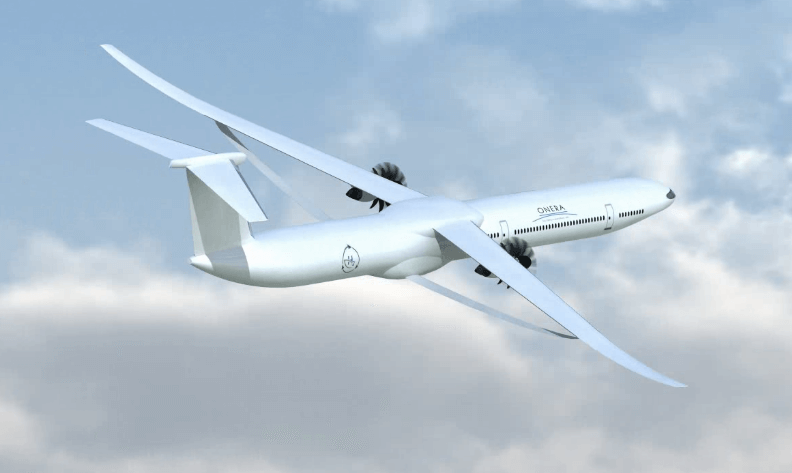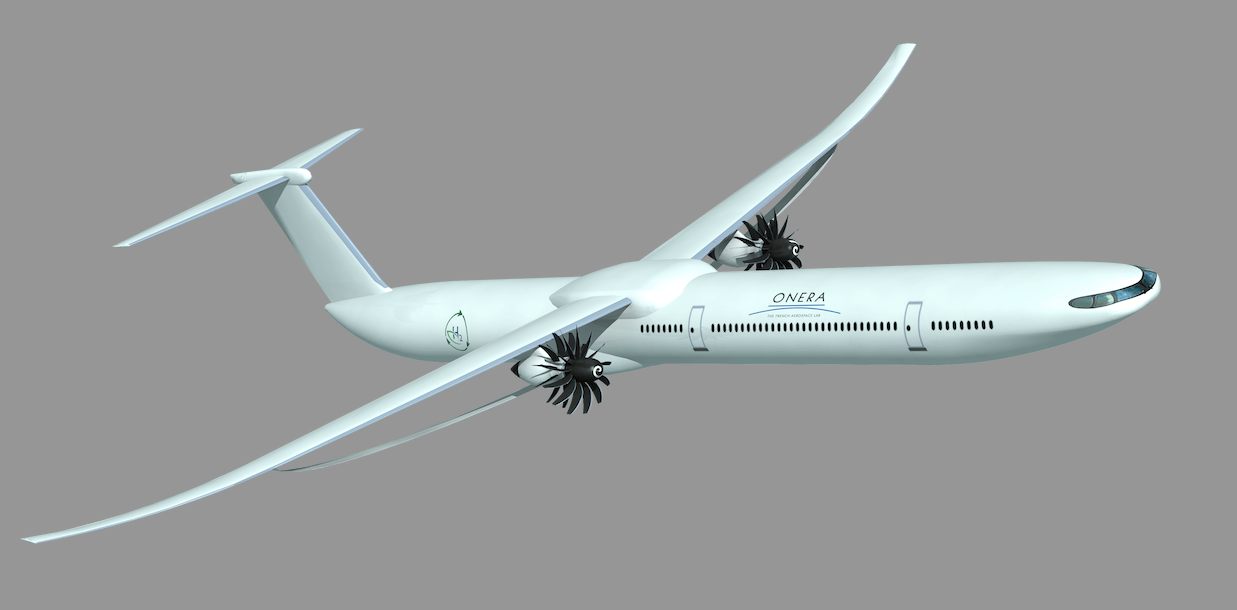ONERA has unveiled its Gullhyver project for the single-aisle aircraft of the future, featuring a non-circular fuselage, a high aspect ratio shrouded wing and a hydrogen-powered engine with a non-ducted fan.
Gullhyver, the single-aisle aircraft of the future
ONERA presented its project for the single-aisle transport aircraft of the future today, June 14, 2023. To reduce energy consumption and aviation's impact on the climate, ONERA has come up with a concept for a hydrogen-powered aircraft with a non-sheathed propeller engine and a high aspect ratio wing. In other words, for the same surface area, the wing is narrower and of greater span than on current aircraft, increasing its aerodynamic efficiency.
Hydrogen propulsion
The specific technical features of this aircraft, christened Gullhyver (Gull for its wing and Hyver for Hydrogen) include not only its hydrogen propulsion, but also its specific fuselage, a direct inheritance from previous studies and in particular the D8 configuration, i.e. a fuselage that is no longer strictly "tube" in shape, but oblong in cross-section. ONERA describes it as the result of optimizing the fuselage's internal layout and aerodynamic behavior, made possible by the use of unconventional materials and structures. The rear section of this non-circular fuselage (see illustration) features neither windows nor passenger seats, as it will literally serve as a hydrogen tank. More precisely, two hydrogen tanks will be fitted to the rear of the fuselage, complete with their thermal insulation and implementation system, with no in-flight carbon emissions.
A high aspect ratio wing
The wing, with its high aspect ratio - ONERA forecasts an aspect ratio of 20, while the Airbus A320 currently has an aspect ratio of 11 - will enable a significant improvement in the lift/drag ratio thanks to its high glide ratio, and a limitation of additional mass - in terms of internal wing reinforcements - thanks to the presence of a shroud, the wing's real strut.
Open Rotor and rectifier
Propulsion, meanwhile, will be provided by Open Rotor-type engines, i.e. with aerodynamic integration of unshrouded fans, for improved specific fuel consumption. Unlike previous versions of this type of engine, these will not be counter-rotating rotors, but rather a fan and a rectifier, to avoid generating too much noise or rather EpndB.
A (very) advanced development
ONERA researchers are working both on the aerodynamic and structural optimization of the concept, the aeropropulsive integration, but also on the overall performance of this aircraft. The explorations involve a multi-disciplinary sizing process, which makes it possible to identify the benefits of each of the new technologies studied separately, but also the additional gains linked to their simultaneous and complementary use on a realistic configuration. The project is more technologically ambitious than Boeing's (the SFD, an acronym for Sustainable FLight Demonstrator), since it incorporates hydrogen and even green hydrogen. It should be added that ONERA is not starting from a blank sheet of paper either: Gullhyver is the culmination or rather the "maturation" of two previous studies, which began with Albatros and then continued through U-Harward, which we detail at length in issue 2438 specially dedicated to this 54th edition of the Bourget International Air and Space Show and which will be on newsstands from Thursday June 15.


Découvrez cet article sur Air&Cosmos

